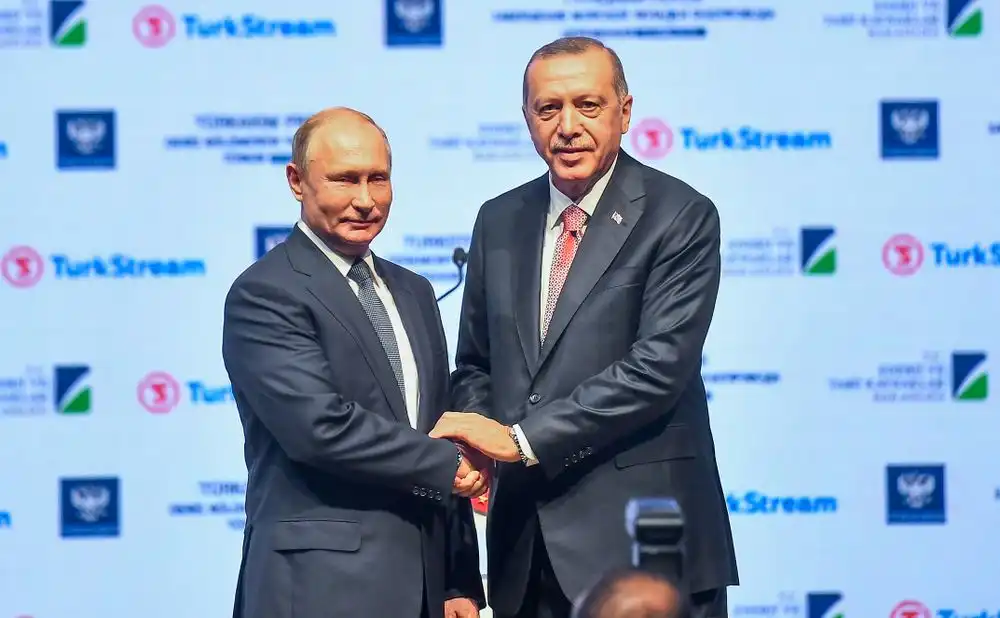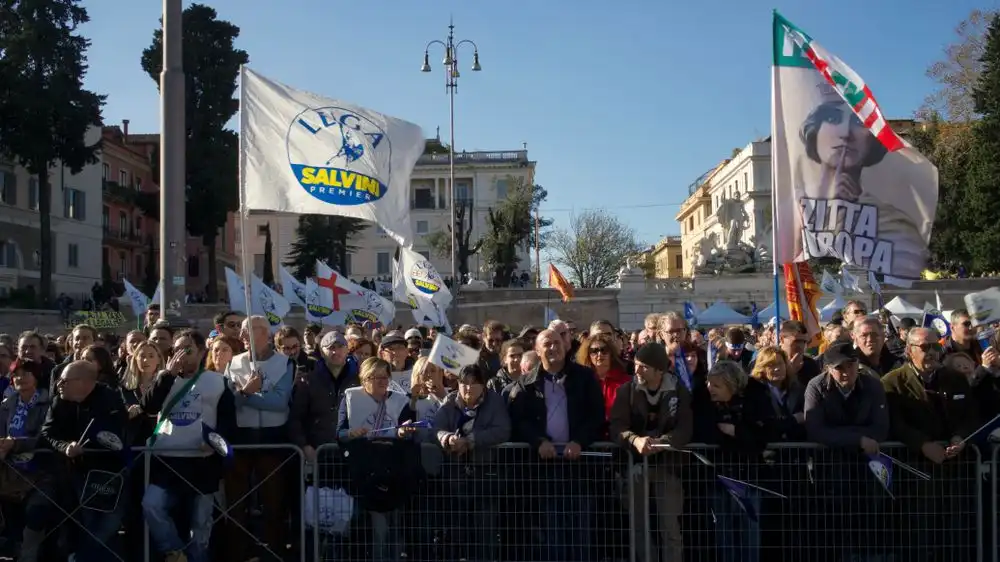Home>Who are the Contemporary Populists in Power? Interview with Alain Dieckhoff, Christophe Jaffrelot and Elise Massicard
02.03.2022
Who are the Contemporary Populists in Power? Interview with Alain Dieckhoff, Christophe Jaffrelot and Elise Massicard
Alain Dieckhoff, Christophe Jaffrelot and Elise Massicard are the co-editors of the latest book published as part of the Sciences Po series in International Relations and Political Economy. The book, entitled Contemporary populists in Power, gathers fourteen scholars, who, through their chapters, contribute to a novel analysis of populism, asking how populist leaders govern once they are in power. Through a comparative analysis of cases as diverse as Brazil and Sri Lanka, to name but two, this book offers a pioneering analysis on the practice of populism, from a geographical and analytical perspective. Interview with the editors.
What definition of populism have you collectively adopted in this volume?
Alain Dieckhoff: There are three main theoretical approaches for understanding the phenomenon of populism. The first perspective, well represented by the works of political scientist Cas Mudde (University of Georgia), emphasizes the role of ideas. It characterises populism as a ‘thin-centred’ ideology that considers society to be ultimately separated into two homogenous and antagonistic camps, ‘the pure people’, who are mobilized by the populists, versus ‘the corrupt elite’.
The second perspective, represented, for instance, by Kurt Weyland (University of Texas at Austin), defines populism simply as a political strategy through which a personalistic leader seeks or exercises government power through direct and unmediated support from large numbers of followers.
The third perspective is represented by authors like Pierre Ostiguy (University of Valparaiso) and Pierre-André Taguieff (Cevipof, Sciences Po) who approach populism as a political style based on the appeal to a ‘true people’ defined either on an ethno-cultural basis (right-wing populism) or on a social basis (left-wing populism). We have decided to adopt this last approach to populism in this book. However, the divide between the three theoretical trends should not be overstated; the political style approach cannot be radically severed from the thin-ideology approach. Promoting a vision of the ‘pure’ people versus the ‘corrupt’ elite leads inevitably to the development of a certain political style based on emotion and affect, which stresses the virtues of the people defended by the heroic leader.
Is populism a concept?
Alain Dieckhoff: Back in 1969, in their seminal work , Populism, Its Meanings and National Characteristics Ernest Gellner and Ghiţa Ionescu called populism an “elusive and protean concept” because it came in so many forms. However, while acknowledging the variety of populist configurations, they nevertheless concluded that populism could be used as a concept. We take the same path. We don’t share the view of some scholars who completely dismiss the word populism because of the diversity of contexts to which it is applied. It should be strongly stated that many social science concepts are applied to a wide range of concrete situations. There are many forms of capitalism, nationalism, or socialism but this heterogeneity does not lead us to reject these terms—and rightly so. Here we are speaking of an ideal type, i.e. a construct designed to help us understand reality. There are two main features of populism as a concept. Firstly, populism is based on a vision of the people as an absolute. Just as authoritarianism emerges due to an abuse of authority, populism occurs when one uses and abuses the word “people,” pronounced as if the referent were sacred. That is the mark of its specific political style. Secondly, populism promotes a direct unmediated relationship between people and leadership. That is why populism is so critical of representative democracy; it is seen as a forgery of the popular will. The paradox of populism is that the promotion of the “true people” ends up by exalting the unique leader.
You consider populist leaders as Janus-like figures, in terms of policy. Can you develop this idea? Is this something that is mostly visible once they are in power?
Elise Massicard: Before being in office, populists claim that they represent the people against the establishment—and they claim to be part of the masses. However, once elected, they become part of the elite. How do they deal with this paradox? Do they completely drop populism once in power, or do they try to maintain it? This questioning is the reason we wanted to explore the possible transformations of populists once they gain power. The book shows that in general, when they gain office, populists tend to maintain their claim to represent the poor and the weak against the establishment, and try to maintain this populist appeal—precisely because its goal is to please the majority. However, more often than not, the economic policy (especially right-wing) that populists defend and implement once they are in power is conservative in socio-economic terms and pro-business—leading some scholars to stress the affinity of right-wing populists with neo-liberalism.
A more sophisticated approach shows that sometimes they maintain their appeal in other ways, reframing the categories of “the people” vs. “the elite”. For example, national-populists tend to emphasize sociocultural issues and reframe the people they claim to represent in identity (religious or ethnic) terms; or national-populists might reframe the loathed elite as “cosmopolitan” or as incarnated by non-elected powerful circles (bureaucrats, judiciary elites, media elites)—while, in socio-economic terms, they tend to defend the social status quo or, more often than not, deliberately choose to remain vague on economic issues—in order to have a large cross-class appeal.

Vladimir Putin and Recep Tayyip Erdogan, at the opening of the Natural Gas Pipeline (turkstream),
19 November 2018 Istanbul, Turkey. Photo by Quetions 123 for Shutterstock
The various contributions of this edited volume focus on the populists in power, i.e. populist governments. Are there regions that stand out as particularly “unique” cases?
Elise Massicard: Most research on populism has focused on three areas, Europe, Latin America, and the United States. This is not a coincidence; populism has existed in these regions for a long time, even if its re-emergence has been cyclical. However, the populist phenomenon—and populists in power—tend to spread on a global scale, in Northern countries but also in the global South. Therefore, in this collection we have tried to include these textbook cases but also cases from other parts of the world where populism has gained momentum—especially the Middle East and Asia—but where this phenomenon is much less researched. Taking an overall perspective on the populists in power in established democracies, in recent democracies, and in less liberal regimes, in both the global North and South allows us to question the categories with which we generally divide the world—they do not necessarily make sense here. However, the collection of chapters is not big enough to offer a comprehensive overview of populism in power all over in the world. Still, it offers a wide range of contrasting cases and case studies.
At the end of the day, I would not argue that there are strong regional specificities—other than the fact that left-wing populism is much more rooted in Latin America than elsewhere in the world. On the contrary, this wide range of cases provides the opportunity to draw some interesting and surprising parallels, for example between populists in Turkey and Thailand, or between India and Israel.
Can regimes be populist?
Christophe Jaffrelot: To some extent, yes. Today, a new type of regime is taking shape, in which populism plays a big part—but not an exclusive part. This new political regime results from a trajectory, a process whose matrix is populism. The starting point lies in the rise of a populist leader who exploits the fear and the anger of the people and mobilises voters against elite groups. Once elected, this leader—who is usually endowed with some charisma—enjoys such popular legitimacy that he is in a position to prevail over his party, the parliament, and even, eventually, the bureaucracy and the judiciary. Populism leads, therefore, to forms of authoritarianism. But in most of the cases when such developments occur, elections remain an important component in the political life of the country, precisely because every four or five years they give a new popular mandate to the leader. These may not be fully free and fair elections, but the leader could nevertheless be defeated, and by winning, he reasserts his authority through an election campaign with a populist style a populist style. Most of the time, the leader adopts a national-populist repertoire because he claims to represent the “sons of the soil” against foreigners. This new regime, therefore, relies on populism, nationalism, and authoritarianism. It can be sustainable and sometimes lasts for years or even decades, like in Turkey, in Israel under Netanyahu, and in India.

Anti EU sign during Matteo Salvini's speech in Piazza del Popolo, Rome, Italy, 8 December 2018.
Photo by Giuseppe Barletta for Shutterstock
Does this collective project open up new avenues for future research?
Christophe Jaffrelot: Yes, precisely in the perspective that I have just outlined above. Until recently, populism was seen as ephemeral, related to social and economic crises, and even somewhat elusive. It seemed to be an opposition repertoire rather than a mode of government. If it becomes part and parcel of a particular kind of political regime, researchers need to adjust to this new situation and study the transition from opposition populism to populist (or electoral) authoritarianism. What are the mechanisms responsible for this structural transformation? Some of the hypotheses to explore pertain to the role of political communication, including social media, and to the connection between populist rulers and their capitalist cronies who fund the saturation of the public space by populist leaders. The political economy of populist authoritarianism needs to be investigated more.
But we also need to understand voters’ behaviour. Why do people (including the poor) support populist leaders (who are often pro-rich) in spite of their often bad economic results? Because of their resentment against the old, cosmopolitan elite? Because of identity politics stigmatizing minorities? Or because they crave security and do not care much for liberty? Supply and demand on the political market need to be scrutinized in parallel of course—they are two sides of the same coin. And to make sense of this new polity, we need to use survey-based methods as well as ethnographic studies, and draw on an interdisciplinary approach combining political science, sociology, geography (the fact that rural areas feel abandoned matters a lot), psychology, and so forth. There is much to do!
Interview by Miriam Périer, CERI.
The Sciences Po Series in International Relations and Political Economy on our website
Follow us
Contact us
Media Contact
Coralie Meyer
Phone : +33 (0)1 58 71 70 85
coralie.meyer@sciencespo.fr
Corinne Deloy
Phone : +33 (0)1 58 71 70 68
corinne.deloy@sciencespo.fr
